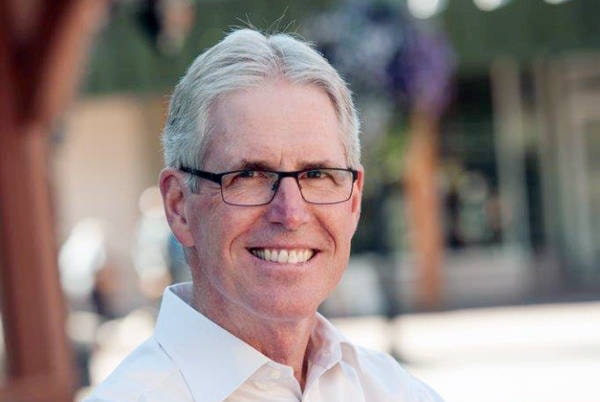Mayor Don McCormick presented his State of the City address at Centre 64 on Wednesday evening, in front of a small but very engaged crowd.
“It was probably two thirds business people,” he said. “Folks were really tuned in to the community. The questions at the end were really good, insightful. We talked about things we need to discuss in order to move the community forward.”
McCormick presented a lot of information in his hour and a half presentation, as he explained where the city is, and where it needs to be in order to remain sustainable for future generations. Watch the Bulletin for follow up next week on some of the issues.
Kimberley continues to be 100 per cent drive by tourism, McCormick says.
“Our primary business type is retail and we’ve had a couple of good years and businesses show good numbers.”
McCormick is very much a believer in data, and he says some of the data amassed in the past year surprised him.
For instance, data shows that in 2017, there were 8,000 overnight stays directly attached to those who attended conferences at the Kimberley Conference Centre. That’s great, he says, but it also means that without the Conference Centre, Kimberley’s tourism overall would have remained flat.
“It certainly reinforces why we entered into an operating agreement with RCR for the conference centre,” McCormick said. “Them having a vested interest in the conference centre and how it drives tourism is valuable.”
It also indicates, the mayor said, that there has to be a closer look at how Kimberley is marketed now.
The other bit of data that he found interesting is that despite the impressive building permit and construction values in recent years, it’s not creating enough taxation revenue to even keep up with the rate of inflation.
“Building permit values in the past three years are awesome,” he said. “We’ve gone from $5 million to $14 million with no major construction. It’s all organic growth — new residences, renovations, upgrades. There’s not $5 million or $10 million project . We hit $14 million on purely organic growth and that’s incredible.”
That $14 million generated $116,000 in new tax revenue. But here’s the reality check.
“$116,000 only covers half of the inflation rate,” McCormick said. “We’d need to generate $30 million a year in new construction just to cover inflation.
“No amount of new construction can keep up with the spending needed to keep pace with the cost of maintaining our current service levels.”
McCormick says that bit of data was a real eye opener for him, and underlines the need for Kimberley’s economy to be less dependent on residential and small business taxes.
He says the city has short, mid-term and long term plans in effect to remain sustainable.
In the short term, keep operating expenses flat. He congratulated city CAO Scott Sommerville and his managers for doing just that.
In the mid-term is sale of long term assets. Since 2015, the city has sold 14 properties. An example of those sales are the five lots created when the Chapman Camp pool was torn down.
“There are new houses on those lots, so we got revenue from the sale, plus tax revenue.”
$704,000 has been generated from those sales, which was put into the Reserve fund and used for such projects as completing the Peak to Platzl trail, finishing the Purcell Park washrooms and seed money to move the cenotaph to the new Veterans Park.
And the long term plan is to attract commercial and industrial entrepreneurs.
As for other challenges facing the city, McComrick says that slow process is being made on the infrastructure deficit.
“We all know we have a $73 million hole. It’s taken 50 years to dig that hole, we’re not going to get out in a short time. But we’re making headway.”
Overall, McCormick says Kimberley is doing well. People seem relatively happy, and that happiness sometimes relates to resistance to change.
“As we feel better about what we are doing, we become resistant to change. It’s like that everywhere. If things were completely in the toilet, people would be lining up for change.”
In the end there are challenges, but the issues are well understood, the mayor said. “Strategies are in place — short and long term — to mitigate issues and create opportunity.”
